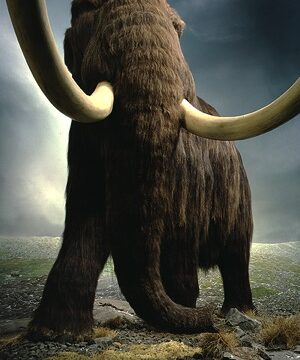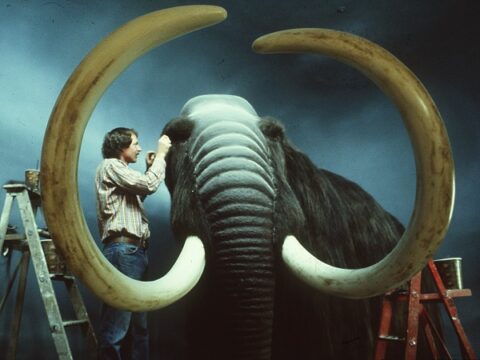Mammoth Proportions
What can you learn about mammoths from the Royal BC Museum?
Have you met the infamous Woolly mammoth at the Royal BC Museum? He greets visitors inside the entrance to the Natural History gallery. Woolly, as he is affectionately called by visitors and museum staff, is a replica of the largest animal to ever walk on this continent. Not everyone likes him. He has been known to frighten small children. But he’s become an iconic symbol of the museum.
Our Woolly mammoth (Mammuthus primigenius) seems real but he isn’t—he contains no ancient materials. Artists built his body from plywood, chicken wire, foam and nine muskox (Ovibos moschatus) hides. His two metre tusks are fibreglass fossil casts. However, Woolly’s size and appearance are based on fossil remains.
Mammoths lived in and fed on tundra vegetation, especially grass. They came to North America from Asia and fossil remains have been found on Vancouver Island and in the Peace River region of British Columbia. Two species of mammoths lived in BC, along with mastodons and ground sloths.
The Woolly mammoth is an extinct member of the elephant family. Extinction began about 12,000 years ago, but some existed as recently as 3,700 years ago. Today’s living Asian and African elephants belong to the same family. Visit the timeline to see when mammoths lived in BC.
In this pathway:
- Imagine what mammoths might have sounded like with help from a museum exhibition
- Discover how we built our Woolly mammoth
- Read more about mammoths
What do you wonder about mammoths?




